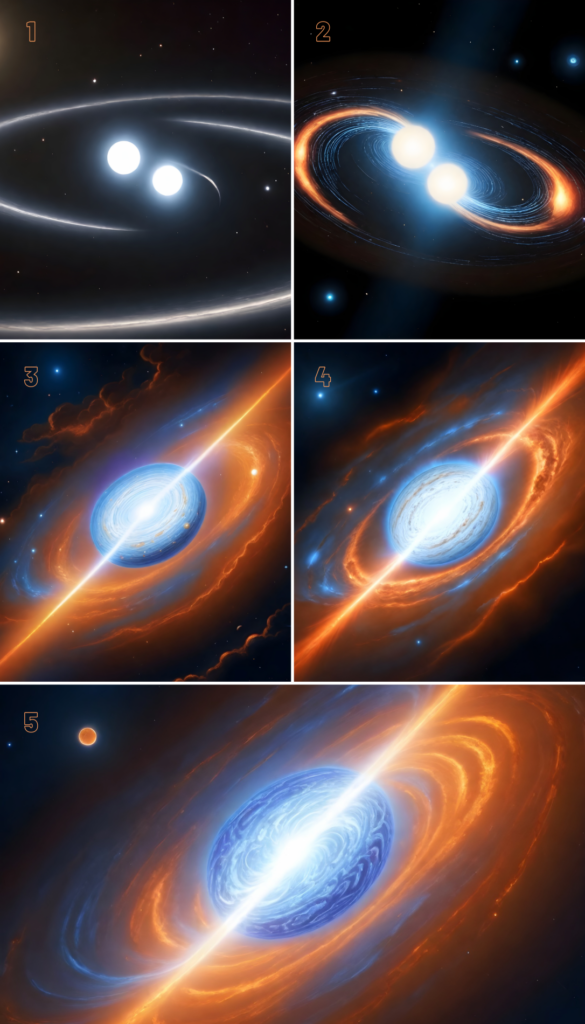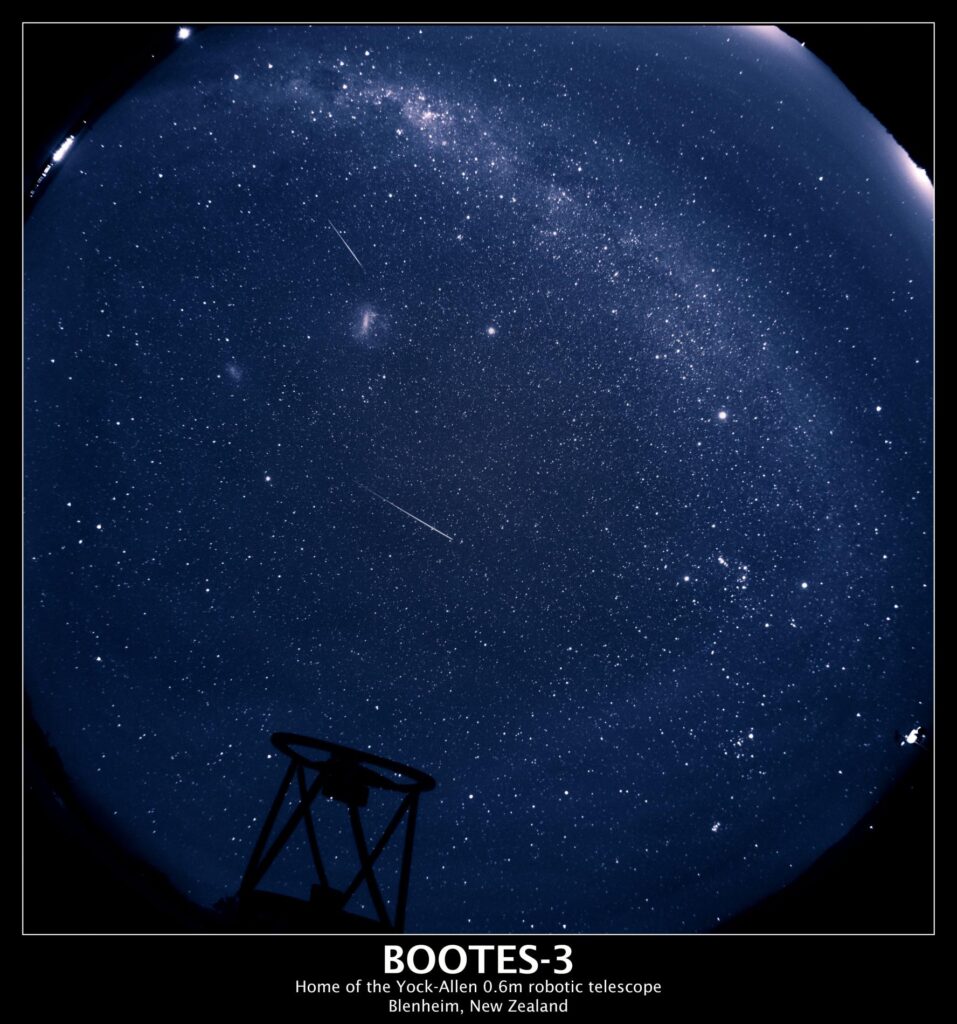Kilonovae are luminous explosions that result from the merger of two neutron stars. These rare phenomena are characterised by the emission of an intense gamma-ray burst (GRB).
Gamma rays have the smallest wavelengths and the most energy of any wavelength in the electromagnetic spectrum. They are produced by the hottest and most energetic objects in the universe, such as neutron stars and pulsars, supernova explosions, and regions around black holes. On Earth, gamma waves are only generated by nuclear explosions, lightning, and the less dramatic activity of radioactive decay.

This new study, recently published in the journal Nature, has confirmed the fundamental role of kilonovae in the production of heavy elements in the Universe, especially those known as ‘rare earth’ elements. These metals are everywhere around us: a single iPhone contains at least 7 or 8 different rare-earth metals! The new findings demonstrate that to make iPhone and other modern technologies possible, a pair of neutron stars had to crash millions of years ago and spread heavy metals into our cosmic backyard.
The kilonova under study is related to a gamma-ray burst observed on 7 March 2023 (GRB 230307A), probably caused by the collapse of two neutron stars located in a distant galaxy about 950 million light-years away from Earth.

Thanks to several highly sensitive observatories and telescopes, such as the Hubble Space Telescope and the James Webb Space Telescope, among others, the authors have been able to follow the event extensively at different wavelengths. This has allowed them to characterise the evolution of the kilonova even up to two months after the explosion. “This is the first time we have been able to see that metals heavier than iron and silver were freshly made in front of us” says Troja.
Detailed analysis of these observations points to the production of heavy elements in the material ejected after fusion. Of particular note is the presence of lanthanides, better known as ‘rare earths’, chemical elements that are fundamental to much of our current technology. “The observed mid-infrared emission from GRB 230307A confirms the formation of elements heavier than iron by a fast neutron capture process, the so-called r-process” explains Alberto J. Castro-Tirado, researcher at the IAA-CSIC and head of the Associated Unit at the University of Málaga, also co-author of the article, together with researchers Ignacio Pérez-García and Youdong Hu, both from the IAA-CSIC. The team has been co-responsible for the optical data contributed to the study acquired by the SOAR telescope, with a diameter of 4.1 metres located in Chile. “This study confirms beyond doubt the fundamental role played by kilonovae in the creation of heavy elements in the universe” concludes Castro-Tirado.

